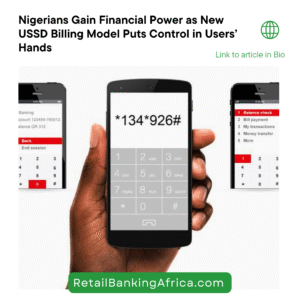In Nigeria’s vibrant urban centres, the mobile money boom is redefining financial transactions—fast, cashless, and seamless. In 2024 alone, mobile money platforms processed a staggering ₦71.5 trillion, according to Nigeria Inter-Bank Settlement Systems (NIBSS). Yet, in rural communities like Temidire in Oyo State, this revolution feels like a distant dream. There, the search for a signal to make a simple call requires luck, elevation, and sometimes a long walk—far from the convenience promised by the fintech wave sweeping across cities.
This contrast reflects a deeper problem: an uneven digital landscape that threatens to widen Nigeria’s financial inclusion gap. In 2023, the Enhancing Financial Innovation & Access (EFiNA) report revealed that 48% of Nigerian adults still lack a financial account, while over 28 million Nigerians with National Identification Numbers (NIN) remain financially excluded.
The divide is stark. Urban areas enjoy high-speed internet and digital infrastructure that supports apps like PalmPay, Opay, and Paga. In contrast, over 39% of network connections in Nigeria still rely on 2G, mostly in rural regions, per April 2025 NCC data. Meanwhile, internet penetration in rural areas lags at 23%, compared to 57% in cities, according to the International Telecommunications Union (ITU).
While operators like PalmPay have introduced USSD-based services to bypass smartphone limitations, even these cannot function reliably where signal strength is weak or nonexistent. “We understand the need for inclusion, which is why we introduced USSD services,” said PalmPay CEO Chika Nwosu. “But network access remains a challenge.”
Experts argue that digital exclusion in rural areas isn’t just a connectivity issue. Low literacy, mistrust of tech-based platforms, and lack of localized education in native languages compound the problem. According to tech expert Ahmed Ogundimu, a multi-pronged approach is required: more base stations, local agents, and culturally tailored financial education programs.
Government-backed projects like Project BRIDGE, the Universal Access Project, and the 774 Connectivity Initiative aim to bridge this digital divide. For instance, 7,000 telecom towers are being planned, with an additional 1,000 base stations to reach unserved areas by 2030. Yet, success depends on efficient execution and community-centric partnerships.
As Nigeria races toward a digital economy, rural voices must not be left behind. Financial inclusion isn’t just about apps and networks—it’s about access, equity, and intentional infrastructure investment. The promise of a cashless Nigeria can only be fulfilled if every Nigerian, regardless of location, can connect.











